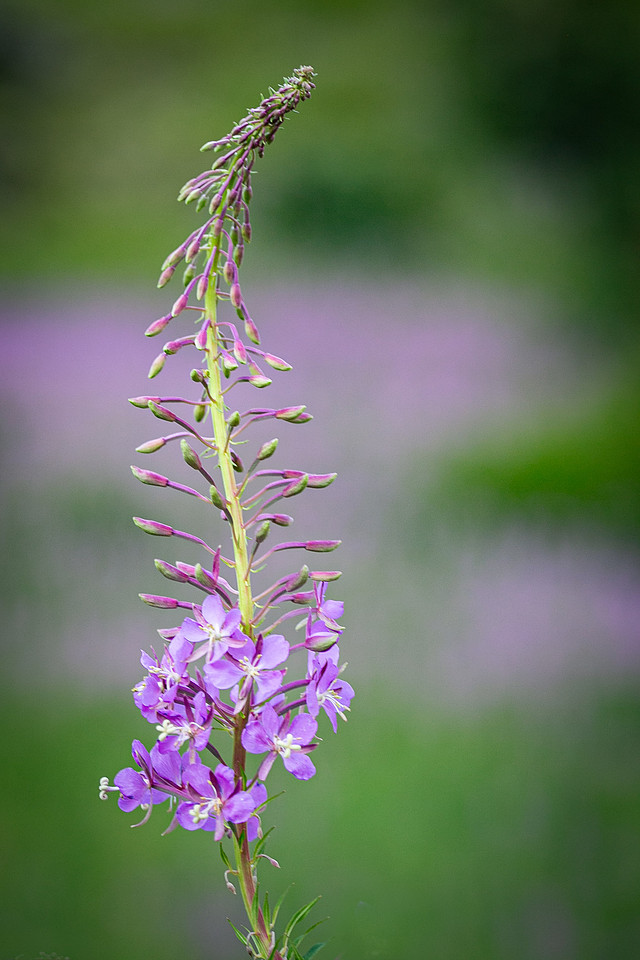Nature Photographer’s Guide to Focal Length
Choosing the Right Lens: A Nature Photographer’s Guide to Focal Length
Text and photos by Heather Cline
 Fireweed, Glacier National Park Fireweed, Glacier National Park
Fireweed, Glacier National Park | 180 mm |
If you've ever found yourself staring at your camera bag wondering which lens to use, you’re not alone. Picking the right focal length is like choosing the right tool for the job—each has its strengths, quirks, and creative possibilities. Whether you’re capturing sweeping landscapes, intimate wildlife shots, or zooming in on distant subjects, understanding focal lengths will help you make the most of your photography. In this article, we will break it down.
Wide-Angle Lenses (14–35mm): Wide angle of view, Lower magnification
Wide-angle lenses are the go-to choice when you want to capture the big picture—literally. Perfect for landscapes, they allow you to cram more scenery into your frame. They also add a fun perspective twist, sometimes making objects in the foreground seem much larger than those in the background. If you ever notice lines curving near the edges, don’t worry—it’s part of the charm (and can be adjusted with a few composition tricks). Want to dial up the drama? Move closer to a foreground subject to exaggerate the perspective distortion. And for the adventurous photographer, fisheye lenses take this effect to the extreme, bending reality for a delightfully distorted, ultra-wide shot.
 Lake Manly, Death Valley National Park
Lake Manly, Death Valley National Park
Lake Manly, Death Valley National Park | 16 mm
Standard Lenses (35–70mm): Angle of view is close to what the human eye sees, Magnification is close to what the human eye sees
Standard lenses offer a natural perspective, mirroring how our eyes see the world. These are your reliable everyday lenses, great for landscapes that feel true to life, wildlife shots that showcase animals in their environment, and close-ups of flowers or other detailed subjects.
- Landscapes: Want to preserve the depth and realism of a scene? A standard lens helps maintain perspective without excessive distortion.
- Wildlife: While telephoto lenses are great for zooming in, standard lenses let you tell a broader story, capturing animals in their natural setting.
- Close-ups: From delicate flower petals to intricate insect wings, a standard lens lets you get close without warping the subject.
 Queens Garden Trail, Bryce Canyon National Park
Queens Garden Trail, Bryce Canyon National Park
Queens Garden Trail, Bryce Canyon National Park | 50 mm
Telephoto Lenses (70mm and beyond): Narrow angle of view, High magnification
Need to get close to something far away? A telephoto lens is your best friend. Whether you’re snapping a distant bird in flight or keeping a safe distance from a wild animal, these lenses bring the subject to you. They also create a compression effect, making background elements appear larger and closer to your subject than they actually are. This can be a fantastic artistic tool for creating visually striking compositions!
 Bobcat, California
Bobcat, California
Bobcat, California | 700 mm
Each focal length serves a unique purpose and learning how to use them effectively can elevate your photography. Experiment with different lenses, play with perspective, and see how each one changes your shot. Most importantly—get out there and start capturing the world through your lens!